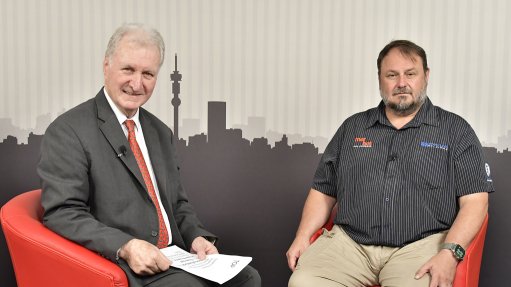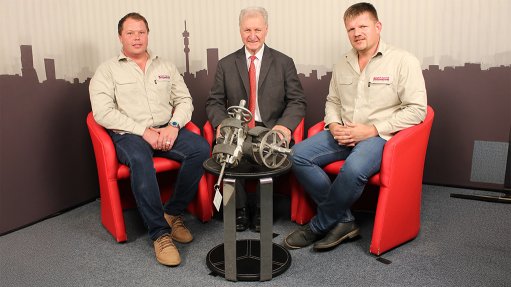SEZ to boost stainless steel industry


HANDS ON The metallurgical complex will increase job opportunities in the stainless steel industry
The Limpopo-based export-orientated mega mineral energy complex, in a special economic zone (SEZ), in which Chinese State-owned companies are set to invest, is “the biggest thing on the horizon” in the local stainless steel industry, says Southern Africa Stainless Steel Development Association (Sassda) executive director John Tarboton.
Chinese investors signed agreements to build the $10-billion Musina Makhado SEZ metallurgical complex during Chinese President Xi Jinping’s State visit in July. Tarboton states that the complex is still in the planning stage and Chinese companies envisage the building of stainless steel, ferrochrome and silicomanganese plants.
“This is a much-needed vote of confidence in the sputtering South African economy,” says Tarboton.
The metallurgical complex will use thermal and coking coal to beneficiate local ores into value-added alloy metals, such as ferrochromium, ferromanganese, silicomanganese and ferrovanadium, as well as stainless steel semi-finished products, probably for final conversion in China. Tarboton says this backward integration lowers the cost of production of stainless steel.
“Having a new 4 600 MW power plant powered by local thermal coal should ensure low-cost electricity production with stable pricing.”
However, Tarboton says, while this development is welcomed, it is important that the construction and operation of the SEZ metallurgical complex employ South African workers and management, maximise the localisation of the plant and equipment; and comply with broad-based black economic- empowerment requirements.
He adds that, while a world-class globally competitive producer of stainless steel flat products exists, the further beneficiation of the minerals into ferroalloys and stainless steel is desirable in terms of job creation and moving down the value chain through beneficiation of the raw materials.
“There is the caveat that this production of semi-finished stainless steel products needs to be integrated into the global stainless steel value chain, as there is no room in the small local economy for another producer supplying primary products into this market,” he reiterates.
Meanwhile, the primary product apparent consumption of the stainless steel industry peaked in 2014 at 199 054 t, but decreased in 2017 to 143 583 t, resulting in a decrease of 28% from 2014 to 2017. “For the first seven months of this year, compared with the first seven months of 2017, apparent consumption is up 12.8%, implying an apparent consumption for 2018 of 161 994 t – still 18.6% off of the 2014 peak,” Tarboton comments.
Domestic demand is generally subdued, but some stainless steel members are noticing an improvement in the 2018 local market, and members who are exporting are doing well in most cases. The exchange rate is helping the competitiveness of exporters, although inputs are mainly US-dollar based. In addition, instability is not welcome and, thus, a weakening exchange rate is beneficial only in the short-term, Tarboton states.
Stainless steel primary production for 2017 was 511 000 t and local apparent consumption 144 000 t, which equates to about R30-billion (R19-billion primary production and R11-billion conversion to finished products). The conversion of primary products to finished products in South Africa accounts for about 37 000 direct jobs. Tarboton states that using the multiplier effect – a phenomenon whereby a given change in a particular input, such as government spending, causes a larger change in an output, such as gross domestic product (GDP) – will add an additional 76 000 jobs and an extra R12-billion to support industries and services. The total value of the industry is thus about R42-billion and accounts for about 114 000 jobs.
The main constraints to growth in the industry are policy uncertainty, rising costs above the inflation rate – particularly electricity – as well as increased labour costs without the concomitant increases in productivity.
“The demand for stainless steel is also linked to GDP and, thus, factors that suppress consumer demand, such as rising fuel prices and high taxation, depress demand for stainless steel products,” he concludes.
Article Enquiry
Email Article
Save Article
Feedback
To advertise email advertising@creamermedia.co.za or click here
Comments
Press Office
Announcements
What's On
Subscribe to improve your user experience...
Option 1 (equivalent of R125 a month):
Receive a weekly copy of Creamer Media's Engineering News & Mining Weekly magazine
(print copy for those in South Africa and e-magazine for those outside of South Africa)
Receive daily email newsletters
Access to full search results
Access archive of magazine back copies
Access to Projects in Progress
Access to ONE Research Report of your choice in PDF format
Option 2 (equivalent of R375 a month):
All benefits from Option 1
PLUS
Access to Creamer Media's Research Channel Africa for ALL Research Reports, in PDF format, on various industrial and mining sectors
including Electricity; Water; Energy Transition; Hydrogen; Roads, Rail and Ports; Coal; Gold; Platinum; Battery Metals; etc.
Already a subscriber?
Forgotten your password?
Receive weekly copy of Creamer Media's Engineering News & Mining Weekly magazine (print copy for those in South Africa and e-magazine for those outside of South Africa)
➕
Recieve daily email newsletters
➕
Access to full search results
➕
Access archive of magazine back copies
➕
Access to Projects in Progress
➕
Access to ONE Research Report of your choice in PDF format
RESEARCH CHANNEL AFRICA
R4500 (equivalent of R375 a month)
SUBSCRIBEAll benefits from Option 1
➕
Access to Creamer Media's Research Channel Africa for ALL Research Reports on various industrial and mining sectors, in PDF format, including on:
Electricity
➕
Water
➕
Energy Transition
➕
Hydrogen
➕
Roads, Rail and Ports
➕
Coal
➕
Gold
➕
Platinum
➕
Battery Metals
➕
etc.
Receive all benefits from Option 1 or Option 2 delivered to numerous people at your company
➕
Multiple User names and Passwords for simultaneous log-ins
➕
Intranet integration access to all in your organisation



















